
|
||
|
Portland art blog + news + exhibition reviews + galleries + contemporary northwest art
|
||
An Expeditionary Journal at U of O's White Stag Block 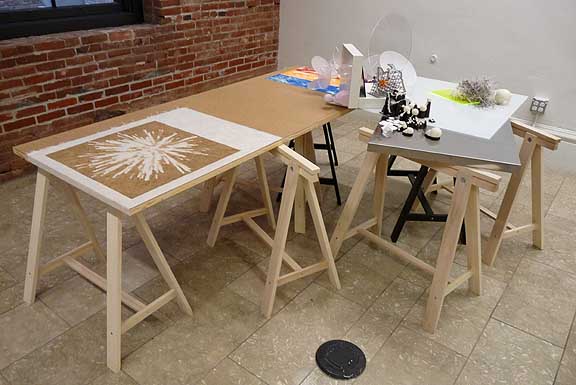 One of the best things about Portland's scene is how some very good shows just seem to appear in new venues when they are least expected. Even more surprisingly, this sometimes occurs at major institutions with little exhibition history. Let's just say there are holes in the cultural landscape that are continually being filled. The University of Oregon's White Stag Blocks building is one such example. Sure, we all expect great things from a really nice building like the White Stag, but the formal gallery spaces are not even finished yet (I'll be curating something significant in them next spring as part of a singularly major cultural/intellectual/art historical event). Till now, episodic moments like the Glen Adamson lecture and some of Matthew Stadler's events at the building have been a bit of a very promising question mark as to how the U of O will fit into Portland's very active civic fabric. 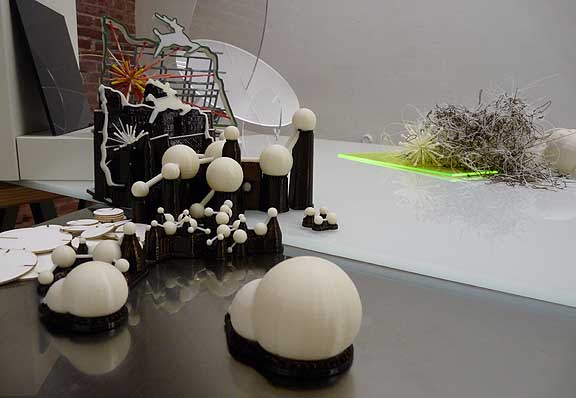
That's where the show, "An Expeditionary Journal: Artifacts of an investigation of new technology, undertaken in the open spirit of Enlightment experimentation," comes in. It doesn't require a formal gallery and instead is presented a bit like the remains of a workshop in one of White Stag's common areas the Fab Lab. The effect works surprisingly well, keeping this work grounded in experimentation so its investigatory élan isn't traded for white box preciousness. The show, a collaboration between Brian Gillis and Mike Miller consists of three table-like constructions balanced upon a series of IKEA-style saw horses. The effect is more Kurt Schwitters Merzbau than Carol Bove' s more sorted strategy but it calls to mind both as quasi anthropological presentations of artifacts. Haim Steinbach and Joseph Cornell are both related to this form of anthropological accretion art as well. 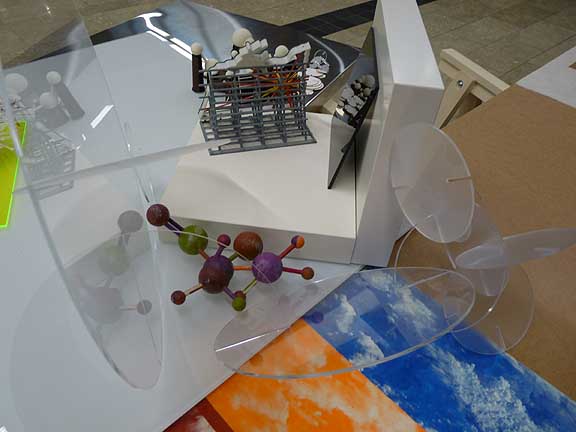
The entire proceedings look like the remnants of some massive brainstorming session, which apparently it was. 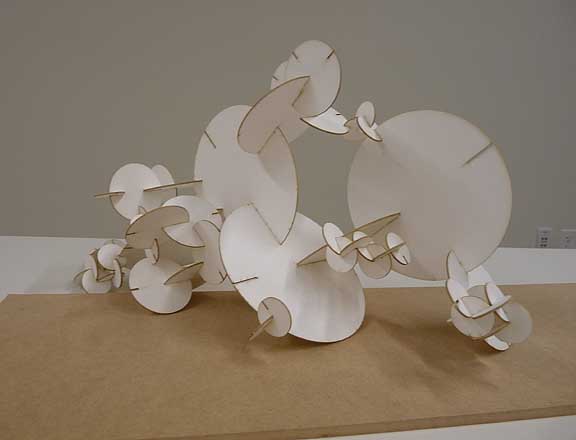
Upon the varied wooden and metal table surfaces, Lazlo Maholy-Nagy-like circular forms, images of explosions, forms resembling molecular models that fit ergonomically into customized bases and odd piles of plastic shavings like the fur of some acrylic yeti are all on display. It is design as organized detritus; the sort of thing an anthropologist might try to recontextualize to understand its purpose… except this show's pure purpose is exploration and curiosity. 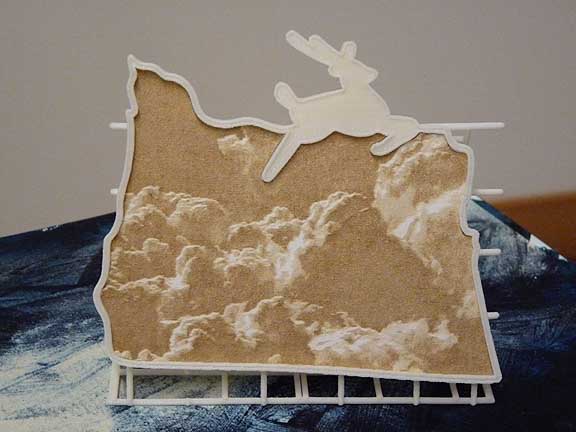
One recognizable and repeated image is the iconic White Stag sign which sits atop the building. Tellingly the sign is bereft of writing, which probably alludes to the city councilman Randy Leonard driven hoopla over the sign's lettering. Notably, I see many presentations where a firecracker explosion punctuates the general area where the city of Eugene would be on the map. Another recognizable image is an explosion plume similar to Mt. St Helens or an atomic weapon. Let's just say there has been way too much grist for the mill over the fact that the U of O's main campus is in Eugene, not Portland. It seems like a retrograde talking point as Portland has generally been upgrading all of its larger art programs from PSU to OCAC to PNCA's impressive expansion plans. The important thing is that all of Portland's art and design schools have upgraded their facilities. When I moved here over a decade ago all of the art schools needed serious upgrades. I'm glad it happened and no one school dominates as Portland is a thriving destination city not a more one dimesnsional college town with one dominating cultural edifice. 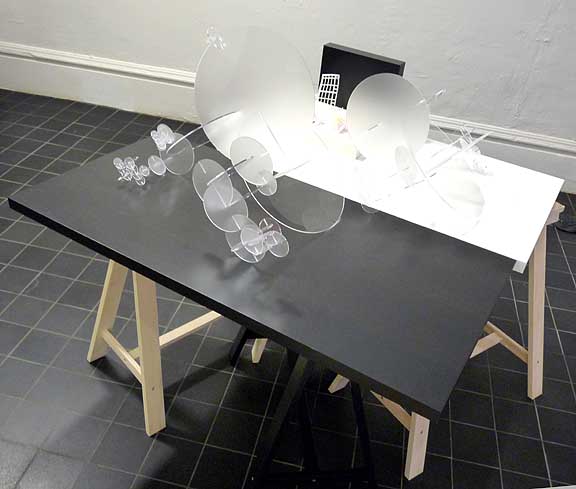
My favorite of the three untitled tables is the black and white yin and yang construction. It feels like what would happen if architect Daniel Libeskind made a horizontal wunderkammer. The stark black and white plays with the floor it stands upon and the cut acrylic maquette constructions shimmer like plans for some Olympics stadium or futuristic desk organizer. The effect speaks of creative activity, problem solving and a general air of experimentation. Overall, though the hyper-regional content of the white stag sign might limit this show's direct referential involvement to Oregon it's interesting to consider the work anthropologically. What does it say about Oregon right now? Probably that we are interested in innovative solutions, new combinations and not afraid of a little ruckus in the IKEA store. The bigger point being asks if Oregon's progressive ideals a kind of American update of Northern European aesthetics and ideals? An Expeditioionary Journal certainly looks that way. It reminds me of the time back in 2002 when Peter Schjeldahl called Portland, "Sweden with SUV's"… whereas I liken Portland and Eugene as America's Switzerland. Of course we have our own identity but it's high time for Portland to step up and own the reputation for the national level leadership that being a progressive Oregonian has come to imply (things like Death with Dignity, urban growth boundaries, green industries, mass transit and serious design... etc). In a way this show adresses a similar willingness to experiment and it's a welcome sight. I suppose it has been done already but Welcome U of O to the White Stag and Portland's old town, what a wonderful show of curiosities. Through September Open Monday - Friday 8.00am to 5.00pm, Saturday 10.00 - 5.00pm, and Sundays 12.00 - 5.00pm. White Stag Block, UO Portland 70 NW Couch Street 97209 503.412.3718 | aaapdx@uoregon.edu Posted by Jeff Jahn on August 22, 2009 at 13:48 | Comments (0) Comments Post a comment Thanks for signing in, . Now you can comment. (sign out)
(If you haven't left a comment here before, you may need to be approved by
the site owner before your comment will appear. Until then, it won't appear
on the entry. Thanks for waiting.)
|
| s p o n s o r s |
 |
 |
 |
 |
 |
 |
 |
 |
 |
 |
 |
 |
 |
 |
 |
 |

|
Site Design: Jennifer Armbrust | • | Site Development: Philippe Blanc & Katherine Bovee | |

